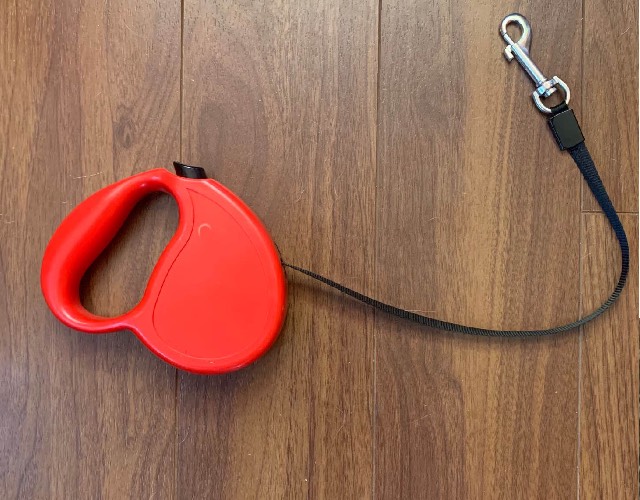It makes sense that while you’re out for a walk with your canine companion that you’d want them to explore, and smell as many smells as they possibly can. Not only is it beneficial for their health and overall well-being, but of course you want them to enjoy themselves.
So it can be tempting to reach for a retractable leash. But there are actually some startling reasons why you may want to reconsider.

A retractable leash isn’t really a leash at all. They consist of a length of thin cord that’s wound around a spring-loaded device that’s housed inside a plastic handle. There’s a button on top to lock the cord in place and allows you to control how much of the cord is extended. They vary in length from roughly 10 – 25 feet and enable you the ability to gauge how far you allow your dog to wander.
So what exactly makes them so dangerous?
Retractable Leashes Offer Minimal Control
Letting your dog get a head start on sniffing may sound appealing, but allowing them to get so far away from you leaves them vulnerable and exposes them to potential danger.
Would your dog choose not to engage an angry snake or not to eat something harmful without you there to immediately influence their behavior? Or what if an aggressive dog, who doesn’t play well with others, is out for a walk with their owner and your playful pup has been allowed enough slack to approach? It’s almost impossible to gain control from so far away.

Retractable leashes don’t give you much control, and allowing your dog too much leeway can be a recipe for disaster. 10-to-25 feet is even long enough to allow your pup to tread into oncoming traffic. While this may seem unlikely, or you may believe it to be infrequent, it actually happens to unsuspecting owners all the time.
Keeping your canine at a close four to six feet (the length of most traditional leashes) better allows you the ability to keep your pup safe and see exactly what they will soon encounter on your stroll.
Retractable Leashes Are Prone To Malfunctioning
It may not seem like they would be, but retractable leashes are incredibly prone to malfunctioning. It’s common for their built-in lock to wear out pretty quickly, and even the thin cord can easily break. This is especially true when a strong, powerful dog is clipped at the end. But even small dogs can pull enough to wear down and snap the thin cord.

Plus, retractable leash handles tend to be bulky. Their large plastic handles can quickly be pulled out of your hand, and may injure or further frighten your pup when it goes hurtling towards or even strikes them.
According to dog trainers, retractable leashes actually encourage your dog to pull. Over time, your furry friend will figure out that the more they pull, the more length of the lead you allow them to have. Even the most well-trained dogs can be unpredictable when frightened, and them pulling too hard or getting themselves wrapped up in the cord can be devastating.
Retractable Leashes Can Cause Catastrophic Injuries To You Or Your Pet
Perhaps the most convincing reason to reconsider their use is the potential for serious injuries. Not only does the holder of the leash risk injury but so does the dog. Users have commonly reported rope burns on their limbs, tripping, or getting tangled in the cord. But broken bones and amputations also happen if the cord is wrapped too tightly around appendages or fingers.

Your immediate reaction when the cord is pulled may be to grab on, but doing so or getting wrapped up as it reels out or retracts can lead to being jerked right off your feet or other serious injuries.
Your dog also runs the risk of getting tangled, strangled, or cut if there is enough cord available. Plus, if the mechanism breaks inside the handle, the metal parts may fly right at you or your pup or your dog could get loose and into a dangerous situation. It’s the same if the cord snaps. They may run off and get lost, or find themself in danger.
Dogs can also be injured as a result of the sudden jerk on their neck that results when they run out of leash. They can experience neck wounds, a lacerated trachea, or even an injury to their spine.
While it may be appealing to allow your dog to have a bit more freedom, the potential consequences simply aren’t worth the risk. Stick to a traditional four-to-six-foot leash if you’re looking for the option that best keeps you and your dog safe.
Featured Image: Facebook
 Toledo, United States.
Toledo, United States.